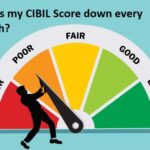Consumer protection laws related to Equated Monthly Installment (EMI) non-payment are designed to safeguard consumers from unfair practices by lenders and ensure that there is a fair process for both parties involved. Here’s an overview of key aspects of these laws:
1. Notification and Communication:
Right to Notice: Lenders are typically required to provide notice before taking any drastic actions, such as repossessing property or filing a lawsuit. Clear Communication: Lenders must clearly communicate the consequences of non-payment and the steps consumers need to take to rectify the situation.
2. Fair Collection Practices:
Harassment Prohibition: Collection agencies and lenders are prohibited from engaging in harassing behaviours, such as making excessive phone calls, using abusive language, or threatening consumers. Time and Place Restrictions: Contact with consumers must be made at reasonable times and places, usually not early in the morning or late at night.
3. Credit Reporting:
Accurate Reporting: Lenders must accurately report the consumer’s credit status to credit bureaus. Incorrect reporting can be disputed by the consumer. Right to Dispute: Consumers have the right to dispute any incorrect information reported to credit bureaus.
4. Repossession and Foreclosure:
Legal Procedures: Lenders must follow legal procedures for repossession or foreclosure, which typically involve court orders and opportunities for the consumer to remedy the default. Right to Cure: Many jurisdictions allow a “right to cure” period during which the consumer can make overdue payments to avoid repossession or foreclosure.
5. Interest and Fees:
Disclosure Requirements: Lenders must disclose all interest rates, fees, and penalties associated with late payments at the time of signing the loan agreement. Reasonable Charges: Penalties and fees must be reasonable and not excessively punitive.
6. Debt Restructuring and Relief:
Restructuring Options: Consumers often have the option to negotiate new payment terms or restructure their debt.
Debt Relief Programs: There are government and non-profit programs available to assist consumers in managing their debts.
7. Bankruptcy Protection:
Automatic Stay: Filing for bankruptcy typically invokes an automatic stay, which halts all collection actions, including repossession and foreclosure. Discharge of Debt: Depending on the type of bankruptcy filed, certain debts may be discharged, meaning the consumer is no longer legally required to pay them.
8. Legal Recourse and Dispute Resolution:
Right to Sue: Consumers have the right to sue lenders for violations of consumer protection
laws. Arbitration and Mediation: Many disputes can be resolved through arbitration or mediation,
which are often faster and less costly than court proceedings.
9. Financial Hardship Provisions:
Hardship Clauses: Some loan agreements include hardship clauses that allow for payment deferrals or reduced payments during times of financial hardship. Government Assistance: Programs may be available to provide temporary relief or assistance during economic downturns or personal financial crises.
Conclusion
Understanding these protections can help consumers navigate the challenges of EMI non-payment and protect themselves from unfair practices. If you’re facing issues with EMI non-payment, it’s often beneficial to seek advice from a financial advisor or legal professional to understand your rights and options in full.
Get in touch with us today at www.Settleloan.in and embark on your path to financial freedom



